Picture this: You’re making your favorite Thai curry, and you reach into your garden to snip fresh lemongrass stalks that cost you practically nothing. No more paying premium prices at the grocery store for wilted herbs that have traveled thousands of miles.
Sound too good to be true? It’s not—and growing your own lemongrass is surprisingly simple, even if you’ve never gardened before.
I still remember the first time I successfully grew lemongrass. What started as a skeptical experiment with grocery store stalks turned into a thriving clump that not only saved me money but also elevated every soup, curry, and stir-fry I made. The best part? This tropical grass is far more forgiving than you’d expect.
Whether you’re dreaming of fragrant Thai soups, refreshing herbal teas, or simply want an ornamental grass that moonlights as a culinary superstar, this guide will walk you through everything you need to know.
By the end, you’ll understand exactly how to grow, harvest, and use lemongrass—transforming a simple grocery store purchase into a perpetual harvest.
What is Lemongrass and Why Should You Grow It?
Lemongrass is a tropical perennial grass that delivers an intense citrus punch without the acidity of actual lemons. Think of it as nature’s way of bottling sunshine—bright, aromatic, and complex with hints of ginger and floral notes.
There are two main varieties you’ll encounter: West Indian lemongrass (Cymbopogon citratus), which chefs prefer for its robust flavor, and East Indian lemongrass (Cymbopogon flexuosus), often grown for essential oils. Both are edible, but if you’re planning to cook with it, West Indian is your best bet.

Beyond the kitchen, lemongrass offers surprising benefits. Its natural citronella content makes it an effective mosquito deterrent. The leaves brew into a soothing tea that’s been used for centuries to aid digestion and reduce anxiety. Plus, watching this elegant grass sway in the breeze adds an exotic touch to any garden or balcony.
Understanding Lemongrass Growing Conditions
Before you start, it’s helpful to understand what lemongrass needs to thrive. This isn’t a fussy plant, but knowing its preferences will help you succeed.
- Temperature and Climate Needs
Lemongrass is a tropical plant at heart. It thrives when temperatures stay consistently above 70°F and becomes unhappy when nighttime temperatures dip below 50°F. Frost? That’s a death sentence.
In USDA zones 9-11, lemongrass can live outdoors year-round as a perennial. In cooler zones, treat it as an annual or bring it indoors when temperatures drop.
- Sunlight Requirements
This sun-loving grass needs at least six hours of direct sunlight daily—eight is even better. A south-facing window works well for indoor plants, while outdoor lemongrass should be positioned in the sunniest spot available. Partial shade won’t kill it, but your stalks will be thinner and less flavorful.
- Soil Preferences
Lemongrass appreciates rich, loamy soil that drains well but retains some moisture. Think of it like a sponge that’s been wrung out—damp but not soggy. Sandy or clay soils can work if you amend them generously with compost or aged manure. A slightly acidic to neutral pH (6.0-7.5) is ideal, though lemongrass isn’t overly picky about this detail.
Three Ways to Start Growing Lemongrass
You have several options for obtaining lemongrass plants, each with advantages depending on your situation, budget, and timeline.
Method 1: The Grocery Store Stalk Method (Easiest and Recommended)
This is my top recommendation for beginners. It’s inexpensive, gives you nearly instant gratification, and has a high success rate once you understand the process.
Selecting Viable Stalks
Visit a grocery store with good produce turnover—Asian markets typically have the freshest lemongrass, though many mainstream supermarkets now stock it. Look for stalks that are firm, pale green at the base, and haven’t dried out.
The critical feature is an intact bulbous base. If you look at the bottom of the stalk, you should see tightly wrapped layers, almost like a leak or green onion. Avoid any stalks where the bottom has been sliced high enough that you see separate rings—those won’t root.
Buy 4-6 stalks to account for rooting failures. Expect a success rate of 50-75% even with fresh stalks, so having extras ensures you’ll get at least a couple of plants.
Preparing Stalks for Rooting
Once home, remove any completely dried or papery outer layers. Using a sharp knife, slice off just the very bottom of the stalk—a thin cut, maybe 1/8 inch—to expose fresh tissue. This increases rooting success rates dramatically.
Trim the leafy tops down to about 6 inches. You can use these trimmings in cooking (steep them in soup or curry) or compost them. Trimming reduces moisture loss while the stalk develops roots.
The Rooting Process Explained
Fill a clear glass or jar with 1-2 inches of water. Clear glass lets you monitor root development, which is both practical and satisfying. Place your prepared stalks in the water with only the bulbous base submerged—if leaves touch the water, they’ll rot.
Position your glass on a warm, sunny windowsill. This is where many beginners struggle: warmth matters enormously during rooting. Ideal temperatures are 70-80°F. Below 65°F, rooting slows to a crawl or fails entirely.
I’ve placed rooting glasses on top of the refrigerator (where heat from the motor creates warmth) or near (not on) a heating vent with great success.
Change the water every 2-3 days to prevent bacterial growth and keep oxygen levels high. Simply pour out the old water and refill with room-temperature water.
Troubleshooting Slow or Failed Rooting
In warm conditions with fresh stalks, you’ll typically see small white bumps (root primordia) appearing at the base within 7-10 days. Actual roots emerge within 2-3 weeks. In cooler conditions or with less-than-fresh stalks, this can take 4-8 weeks.
If a stalk starts smelling funky or the base becomes slimy, it’s rotting. Remove it immediately before it contaminates the water and affects other stalks. Start fresh with a new stalk.
If nothing happens after a month, check your temperature and light conditions. Move the glass to a warmer location and ensure it’s getting plenty of bright, indirect light (direct hot sun can overheat the water).
Wait until roots reach 2-3 inches long before planting. Shorter roots are fragile and easily broken during transplanting. Longer roots (over 4 inches) become brittle and tangled—still usable but requiring more careful handling.
Method 2: Dividing Established Plants (Fastest to Harvest)
If you know someone growing lemongrass or you’re expanding from your own established plant, division provides the fastest route to harvestable plants.
Lemongrass grows in a clumping pattern, producing new shoots (called tillers) from the base. These form a dense mat of interconnected roots and stalks. Dividing simply means separating this mass into smaller, independent clumps.
When and How to Divide
The best time to divide lemongrass is early spring, just as new growth begins but before the plant puts energy into producing tall stalks. In warm climates, you can also divide in fall.
For potted plants, turn the pot on its side and slide the root ball out. For in-ground plants, dig around the entire clump about 6 inches out from the visible stalks, then lift the whole mass with a spade.
Use a sharp spade, large knife, or even a small pruning saw to cut the root ball into sections. Each division should include 3-5 stalks with attached roots. Don’t worry about being too precise—lemongrass is remarkably forgiving of rough treatment during division.
Trim the leaves back to about 4-6 inches tall on each division. This reduces stress on the roots by limiting water loss through transpiration. The foliage will quickly regrow once the divisions establish.
Replant divisions immediately at the same depth they were growing previously, water thoroughly, and mulch around the base. These divisions typically show new growth within 1-2 weeks and can be harvested within 2-3 months—much faster than starting from stalks or seed.
Method 3: Starting from Seed (For the Patient Gardener)
Growing lemongrass from seed is entirely possible but significantly more challenging than the other methods. Seeds have spotty germination rates, require precise conditions, and take longer to reach maturity.
I generally don’t recommend this approach for beginners, but if you enjoy the seed-starting process or can’t source fresh stalks, here’s how to succeed.
- Seed Selection
Purchase fresh seeds from a reputable supplier—seed viability drops quickly after the first year. Look specifically for Cymbopogon citratus (West Indian lemongrass) if you want culinary varieties. Note that East Indian lemongrass seeds are more commonly available since that species produces viable seed more readily.
- Germination Requirements
Lemongrass seeds need light to germinate, so don’t bury them. Press seeds gently onto the surface of moistened seed-starting mix and barely cover with a thin dusting of mix or vermiculite—just enough to keep seeds in place but not block light.
Temperature is critical: maintain soil temperature between 70-85°F using a seedling heat mat. Room-temperature conditions often aren’t warm enough for reliable germination.
Create a humid microenvironment by covering your seed tray with a clear dome or plastic wrap. This prevents the surface from drying out, which would stop germination dead in its tracks.
Keep the soil surface consistently moist but not soggy. Use a spray bottle to mist rather than pouring water, which can dislodge or bury seeds.
Germination takes 10-21 days under ideal conditions, sometimes longer. Be patient. Once seedlings emerge, remove the dome gradually over several days to acclimate them to lower humidity.
When seedlings reach 3-4 inches tall with several leaves, transplant them into individual 3-4 inch pots. They’ll be ready to move to their final container or outdoor location once they reach 8-10 inches tall and nighttime temperatures stay above 60°F.
Planting Your Lemongrass for Success
Whether you’re working with rooted stalks, divisions, or seedlings, proper planting sets the stage for vigorous growth.
Choosing Between Containers and In-Ground Planting
Container growing offers unmatched flexibility, especially for gardeners in cold climates who need to bring plants indoors seasonally. Containers also allow you to control soil quality exactly and move plants to follow the sun or protect from wind.
Choose a pot at least 12 inches in diameter and equally deep—bigger is better for mature plants. Lemongrass develops an extensive root system that quickly fills smaller containers. I’ve seen enthusiastic root growth crack undersized ceramic pots.
If you’re starting with rooted stalks or small seedlings, you can begin in a 6-inch pot and transplant up to larger containers as the plant grows, but skipping straight to a 12-inch pot saves repotting effort.
Ensure your container has drainage holes. Even moisture-loving lemongrass will develop root rot in constantly waterlogged soil.
In-ground planting works beautifully in zones 9-11 and can succeed in zone 8 with careful site selection and winter protection. Choose a location in full sun with good drainage—avoid low spots where water pools after rain.
Lemongrass planted in-ground tends to grow larger and more vigorous than container plants but requires more effort to overwinter in borderline climates.
Soil Preparation and Planting
For containers, fill with a quality potting mix enriched with compost. A good ratio is three parts potting mix to one part compost. Mix thoroughly before filling containers.
For in-ground planting, prepare the bed by spreading 3-4 inches of compost or well-rotted manure over the planting area. Work this into the top 8-10 inches of soil with a spade or tiller. This creates a nutrient-rich, well-draining environment that lemongrass loves.
Dig a hole slightly larger than your root ball. For rooted stalks, the hole only needs to be a few inches deep. Position plants so the bulbous base sits about 1 inch below the soil surface—any deeper and growth slows; any shallower and roots may dry out.
Space multiple plants 24-36 inches apart. This seems excessive when you’re planting small stalks, but trust me—lemongrass fills that space within a single growing season. Crowding leads to poor air circulation (inviting fungal problems) and competition for nutrients and water.
After planting, water deeply until water runs from container drainage holes or soil is thoroughly moistened 6-8 inches deep for in-ground planting.
The Magic of Mulch
Apply 2-3 inches of organic mulch around plants, keeping it 2 inches away from direct contact with stalks. Mulch provides multiple benefits: it moderates soil temperature, reduces water evaporation, suppresses weeds, and gradually breaks down to feed the soil.
Good mulch choices include wood chips, shredded bark, straw, or even grass clippings (in thin layers). Avoid piling mulch against the stalks themselves, which can trap moisture and encourage rot.
Caring for Your Lemongrass Throughout the Season
Once established, lemongrass requires relatively little maintenance, but attention to a few key areas makes the difference between an okay plant and a thriving, productive one.
Watering: Finding the Sweet Spot
Lemongrass likes consistent moisture, which means keeping soil damp (like a wrung-out sponge) but never soggy. The exact watering frequency depends on several factors: temperature, humidity, container size, soil type, and whether plants are in the ground or in pots.
During hot summer weather, container plants may need water daily—sometimes twice daily in extreme heat. Check by inserting your finger into the soil to the second knuckle. If it feels dry at that depth, water thoroughly until water runs from drainage holes.
In-ground plants develop deeper roots that access moisture lower in the soil profile. Once established (after the first month), they typically need deep watering 2-3 times weekly in hot weather, less frequently in cooler conditions or if rainfall occurs.
Morning watering is ideal because it allows foliage to dry before evening, reducing fungal disease risk. However, if your plant is wilting in afternoon heat, don’t hesitate to water—a wilted plant is an unhappy plant.
The Critical Role of Nitrogen
Lemongrass is a heavy feeder, particularly for nitrogen, which drives the lush green growth we’re after. Like lawn grass, it responds dramatically to regular fertilizing with nitrogen-rich products.
For container plants, apply a balanced liquid fertilizer diluted to half strength every two weeks during active growth (typically June through September in temperate climates). Choose a fertilizer with an NPK ratio like 10-10-10 or 20-20-20. Alternatively, use an organic fish emulsion, which is naturally nitrogen-rich and provides micronutrients.
In-ground plants benefit from slow-release organic fertilizers applied monthly. Excellent choices include:
- Blood meal (13-0-0): Provides quick-release nitrogen
- Alfalfa meal (5-1-2): Moderate nitrogen plus growth stimulants
- Feather meal (12-0-0): Slow-release nitrogen
- Aged chicken manure (4-2-2): Balanced nutrition with good nitrogen
Apply these organic fertilizers by scratching them into the soil surface around plants (but not touching stalks directly) at label rates, then watering thoroughly.
Compost tea—made by steeping compost in water for 24-48 hours—provides gentle nutrition and beneficial microorganisms. Apply every 2-3 weeks as a soil drench.
Side-dressing with compost every 3-4 weeks is perhaps the simplest approach. Simply spread a 1-inch layer of finished compost around the base of plants. This provides slow-release nutrients and improves soil structure simultaneously.
Signs of nitrogen deficiency include yellowing lower leaves, slow growth, and thin stalks. If you notice these symptoms, increase fertilization frequency.
Understanding Lemongrass Growth Patterns
New gardeners often worry when lemongrass seems to just sit there doing nothing for weeks after planting. This is completely normal. Lemongrass grows very slowly until consistent heat arrives. Think of it as a switch that flips once soil and air temperatures stay solidly in the 70s and 80s.
Once that heat trigger hits, growth explodes. The same plant that gained maybe 2 inches in a month suddenly shoots up 2 inches in a week. Patience during the slow period pays off with rapid expansion once conditions are right.
Managing Clump Expansion
As lemongrass grows, it produces new shoots (tillers) from the base, gradually expanding into a wider clump. In containers, this eventually leads to pot-bound conditions where roots circle the container and growth slows.
Watch for signs like water running straight through the pot (roots have displaced so much soil there’s nowhere for water to absorb), roots growing from drainage holes, or slowed growth despite adequate fertilization.
When containers become crowded—typically every 2-3 years—divide the plant in early spring. Remove it from the pot, use a sharp knife or spade to cut the root ball into 2-4 sections depending on size, and repot each section into fresh soil. You’ll suddenly have multiple plants to share, expand your garden, or replace aging clumps.
In-ground plants can grow indefinitely without division, but dividing every 3-4 years keeps clumps vigorous and provides fresh material for propagation. Very old clumps may develop dead centers with growth only around the perimeter—division rejuvenates these tired plants.
A Word About Those Sharp Leaves
Before we go further, there’s a safety issue every lemongrass grower learns about eventually—better you hear it now than discover it with bleeding fingers.
Mature lemongrass leaves have edges like razors. The silica-reinforced leaf margins can slice skin as cleanly as paper, and because you often don’t feel it happen immediately, you only notice when blood appears. This isn’t an exaggeration or me being overly cautious.
Always wear gardening gloves when working around lemongrass, especially when harvesting, dividing, or pruning. Long sleeves provide extra protection. Teach children to admire lemongrass from a distance rather than running fingers along those tempting, grass-like blades.
 Here’s How to Create a Fun and Educational Vegetable Garden for Kids
Here’s How to Create a Fun and Educational Vegetable Garden for Kids
Overwintering Strategies
If you live where winters get cold, you have several options for keeping your lemongrass alive until next year.
- Container Method
This is the simplest approach. Before the first frost, cut the plant back to about six inches tall and bring the entire container indoors. Place it in a bright, sunny window where temperatures stay above 55°F. Water sparingly through winter—just enough to keep the soil barely moist. The plant will go semi-dormant and won’t grow much, but it will survive.
Resume normal watering and feeding when spring arrives and new growth appears.
- Dormant Storage
For a lower-maintenance approach, cut plants back to about six inches and store the pot in a cool, dark location like a basement or garage where temperatures stay between 40-50°F. Water just once or twice during winter—enough to keep roots alive but not encourage growth.
In spring, move the pot back to a sunny location and resume watering. New shoots will emerge once the weather warms.
- Digging and Replanting
If your lemongrass is in the ground, you can dig up a few stalks with roots intact in fall, pot them, and treat them as container plants indoors. This works well if you don’t want to sacrifice your entire patch.
Harvesting Your Lemongrass
One of the most satisfying moments in growing lemongrass is that first harvest. The aroma alone is worth the wait.
When to Harvest
Your lemongrass is ready when stalks reach at least 12 inches tall and the base measures half an inch thick. This typically happens three to four months after planting from rooted stalks. You can harvest earlier if needed, but younger stalks will be smaller and less flavorful.
How to Harvest
Grasp a stalk near the base and either cut it at ground level with sharp scissors or twist and pull to remove it entirely. Harvesting the whole stalk (roots and all) actually encourages the plant to produce more shoots, so don’t worry about being too aggressive.
Remove any dead outer leaves and trim off the grassy top portion, leaving the bottom 6-8 inches of the stalk. This is the part you’ll use in cooking.
What to Do with Your Harvest
The pale, bulbous base of the stalk is the most prized part—this is where the intense lemon flavor concentrates. Peel away the tough outer layers until you reach the tender, pale-yellow interior. This can be finely minced, pounded into a paste, or sliced into thin rounds.
The leaves aren’t wasted, though! Bundle them and steep in hot water for a refreshing, lemony tea. Or tie them together and drop them into soup broths and curries, removing before serving (like bay leaves).
Storing Lemongrass for Later Use
You’ve harvested more lemongrass than you can use immediately—wonderful problem to have! Here’s how to preserve it.
- Refrigeration
Fresh lemongrass stalks store well in the refrigerator for two to three weeks. Wrap them loosely in a damp towel and place in a plastic bag in the vegetable crisper.
- Freezing
This is my preferred method. Lemongrass freezes beautifully and maintains its flavor for up to six months. You can freeze whole stalks or chop them first. I like to slice stalks into two-inch segments, freeze them on a baking sheet until solid, then transfer to freezer bags. This way, you can grab exactly what you need without thawing the entire batch.
- Drying
Bundle lemongrass leaves and hang them upside down in a warm, dry location until completely dry. Store dried lemongrass in airtight jars away from light. While dried lemongrass works for teas and long-simmered dishes, it loses some aromatic intensity compared to fresh or frozen.
Common Problems and Solutions
Even easy-going lemongrass occasionally faces challenges. Here’s how to troubleshoot.
- Thin, Weak Stalks
If your lemongrass produces lots of leaves but thin stalks, it likely needs more nitrogen. Increase your fertilizing routine and ensure the plant receives full sun. Plants grown in shade produce more leaf growth but less substantial stalks.
- Brown Leaf Tips
This usually indicates underwatering or low humidity. Increase watering frequency and, for indoor plants, consider misting leaves occasionally or using a pebble tray for extra humidity.
 Here’s How to Identify and Fix Brown Spots on Your Snake Plant
Here’s How to Identify and Fix Brown Spots on Your Snake Plant
- Rust Fungus
Rust appears as reddish-brown or yellow streaks on leaves. It’s caused by excessive moisture and poor air circulation. Remove affected leaves immediately and adjust watering—avoid overhead watering and ensure plants have adequate space for airflow. In severe cases, apply an organic fungicide.
- Spider Mites
These tiny pests occasionally bother indoor lemongrass plants. You’ll notice fine webbing and tiny yellow specks on leaves. Spray plants with a strong stream of water or use insecticidal soap. Increasing humidity helps prevent infestations.
- Yellow Leaves
A few yellow leaves on mature plants is normal. Excessive yellowing usually means overwatering or poor drainage. Let the soil dry slightly between waterings and check that containers have adequate drainage holes.
Creative Ways to Use Lemongrass
Beyond the obvious culinary applications, lemongrass offers surprising versatility.
In the Kitchen
Lemongrass is essential in Thai curries, Vietnamese pho, and Indonesian rendang. But don’t limit yourself to Asian cuisine—try it in:
- Chicken marinades (minced lemongrass, garlic, and fish sauce)
- Lemongrass simple syrup for cocktails and iced tea
- Infused into coconut milk-based soups and sauces
- Pounded into compound butter for seafood
As a Natural Remedy
Lemongrass tea aids digestion, reduces bloating, and may help with anxiety and sleep. Steep fresh or dried leaves in boiling water for 10 minutes, strain, and sweeten with honey if desired.
For Pest Control
The natural citronella content helps repel mosquitoes. While having plants nearby won’t create a mosquito-free zone, you can make a simple spray: simmer chopped lemongrass in water for 30 minutes, strain, cool, and spray on skin or outdoor fabrics. Reapply every few hours.
Companion Planting and Garden Integration
Lemongrass doesn’t just grow in isolation—it plays well with many other plants and can serve multiple roles in your garden design.
Good Companion Plants
Lemongrass thrives alongside plants with similar cultural requirements:
- Other herbs: Mint, Thai basil, cilantro, and shallots all appreciate similar moisture and sun conditions. Plant them together in large containers or garden beds.
- Ginger and galangal: These tropical rhizomes make perfect companions, creating an Asian herb garden. They can even share a large container.
- Fruit trees: In tropical and subtropical regions, use lemongrass as an understory planting around citrus, mango, or papaya. It helps suppress weeds and may deter some pests.
- Flowering plants: Use lemongrass as a backdrop for shorter flowering plants like geraniums, marigolds, or petunias. The vertical grass creates height and movement while flowers provide color.
Plants to Avoid Near Lemongrass
Lemongrass’s vigorous growth and spreading habit can overwhelm small or slow-growing plants. Avoid planting directly adjacent to:
- Delicate groundcovers that lemongrass might smother
- Very shallow-rooted plants that will compete poorly for water
- Plants that prefer dry conditions (lemongrass’s watering needs may cause root rot in drought-adapted plants)
Using Lemongrass in Landscape Design
Beyond the herb garden, lemongrass has ornamental value:
- As a vertical accent in mixed containers, lemongrass provides height (the “thriller” in the thriller-filler-spiller formula) while lower plants fill around the base.
- For informal hedging or screens, plant lemongrass 18-24 inches apart in a row. The mature clumps blend together, creating a privacy screen that moves gracefully in the breeze.
- As a garden border, lemongrass marks boundaries while adding texture. Just ensure it’s set back far enough from paths that those sharp leaves won’t catch passersby.
- In tropical-themed gardens, lemongrass fits naturally alongside bananas, cannas, elephant ears, and other bold-textured plants.
 Here’s How to Create a Harmonious Garden: A Guide to Beautiful Design
Here’s How to Create a Harmonious Garden: A Guide to Beautiful Design
Frequently Asked Questions
- Can I grow lemongrass from seed?
Yes, but it’s challenging and slow. Seeds require consistent warmth (70-85°F), high humidity, and can take three weeks or longer to germinate. Success rates vary. Starting with stalks is much easier and faster for beginners.
- Will lemongrass survive winter in my area?
Lemongrass is only hardy in zones 9-11. In zone 8, it might survive mild winters with heavy mulching but will likely die back. For zones 7 and colder, plan to bring plants indoors or treat them as annuals.
- How big does lemongrass get?
In ideal conditions, a single plant can reach 3-5 feet tall and spread 2-4 feet wide in one growing season. Container plants typically stay smaller (2-3 feet) due to root restriction.
- Is lemongrass safe for pets?
Lemongrass can cause mild stomach upset in cats and dogs if eaten in quantity. While it’s not highly toxic, it’s best kept out of reach of curious pets who like to nibble plants.
- Why isn’t my lemongrass producing thick stalks?
Several factors can cause thin stalks: insufficient nitrogen, inadequate sunlight, inconsistent watering, or the plant being too young. Ensure you’re fertilizing regularly, providing full sun, and being patient—stalks thicken as the plant matures.
- Can I grow lemongrass indoors year-round?
Absolutely! As long as you can provide 6-8 hours of bright light (a grow light works well), consistent warmth, and regular watering, lemongrass grows happily indoors. Just be aware that indoor plants typically stay smaller than outdoor counterparts.
Conclusion
Growing lemongrass transforms from an intimidating prospect to a simple pleasure once you understand this tropical grass’s straightforward needs. Let’s recap the essentials:
- Start smart: Propagate from store-bought stalks rather than wrestling with seeds
- Provide the basics: Full sun, warm temperatures, consistent moisture, and nitrogen-rich soil
- Be patient: Lemongrass grows slowly until summer heat arrives, then explodes with growth
- Harvest generously: Cutting stalks encourages more production
- Protect from cold: Bring containers indoors or mulch heavily in borderline climates
Whether you’re growing a single pot on a sunny windowsill or establishing a large clump in your garden, lemongrass rewards minimal effort with maximum flavor. Every stalk you harvest represents money saved and meals elevated.
Plus, there’s something deeply satisfying about walking into your garden (or to your windowsill) and snipping fresh herbs that would cost several dollars at the store.
Ready to get started? Grab a few fresh lemongrass stalks on your next grocery run, set them in a sunny window with water, and begin your journey toward self-sufficient, flavorful cooking. Your future self—and your taste buds—will thank you.
Have you tried growing lemongrass before? Share your experiences, challenges, or favorite ways to use this versatile herb in the comments below. And if this guide helped you, pass it along to a fellow gardening enthusiast who’s ready to expand their herb collection!
source https://harvestsavvy.com/growing-lemongrass/
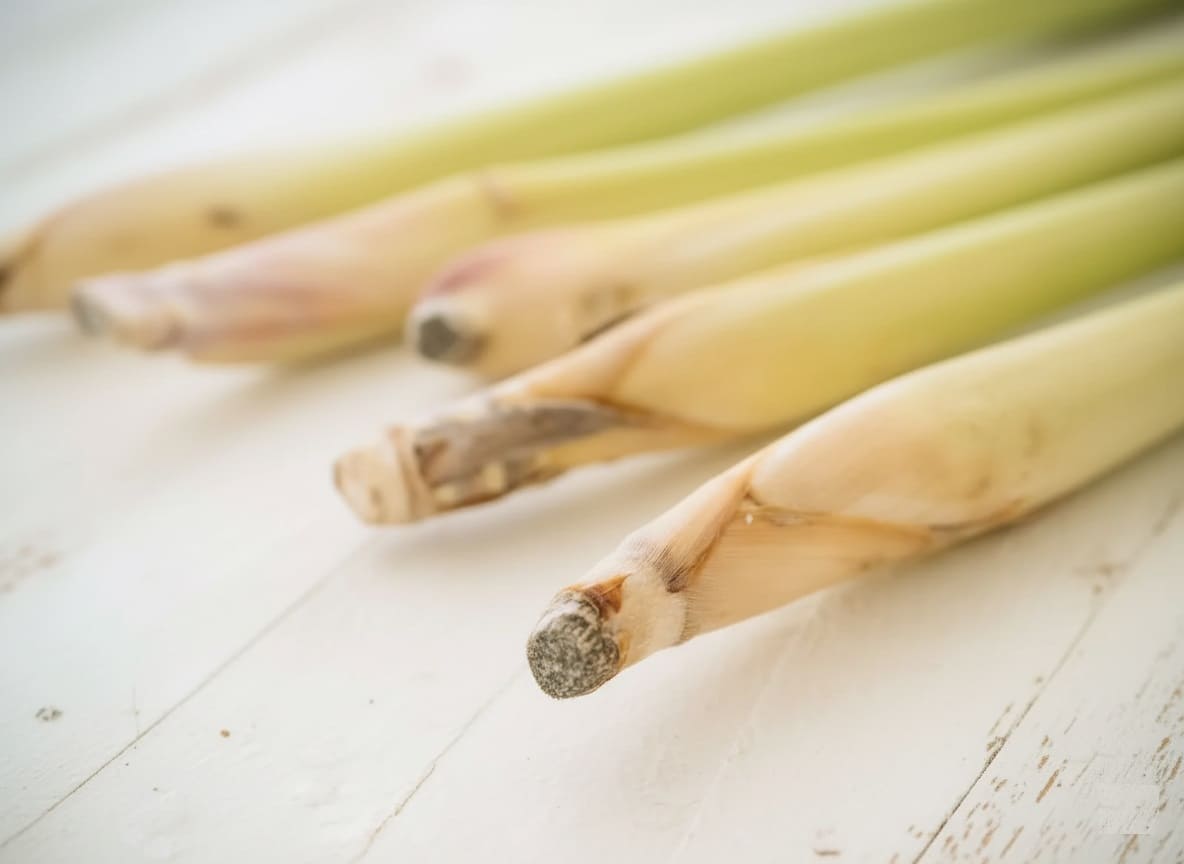
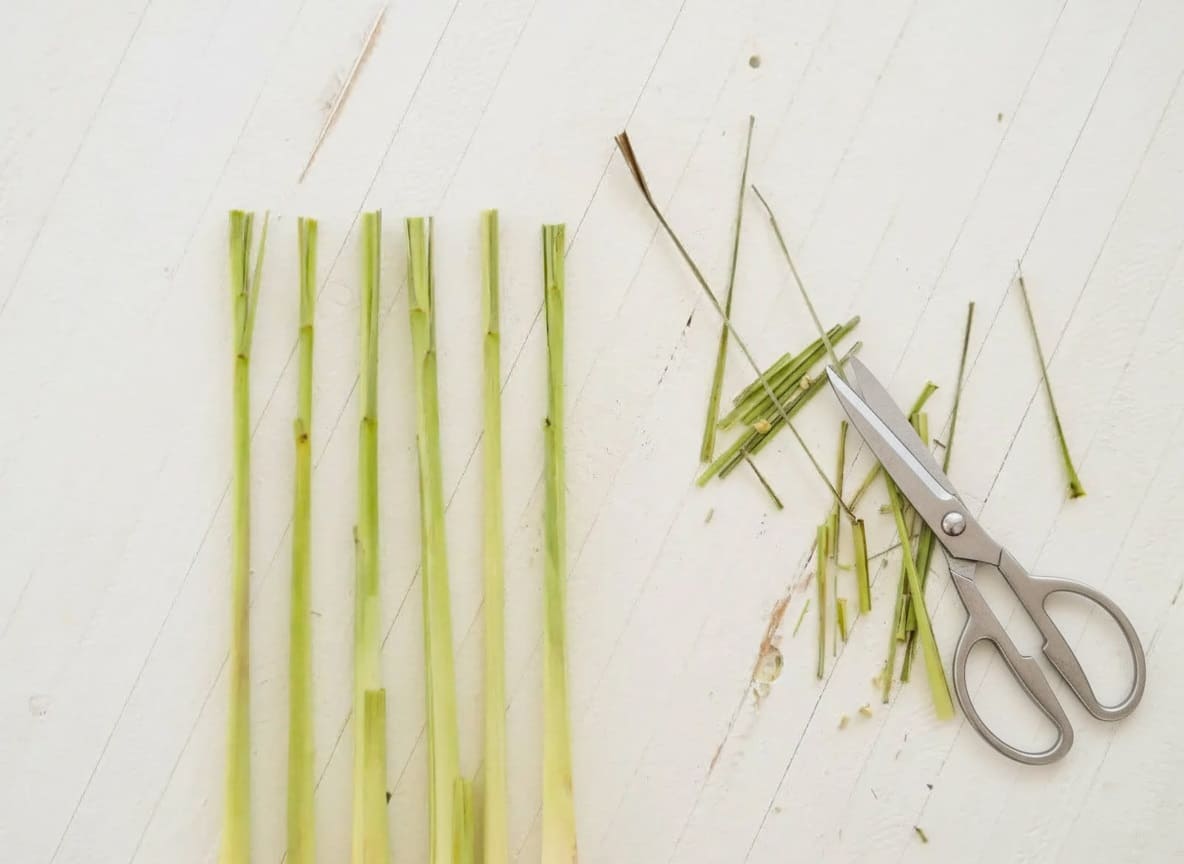

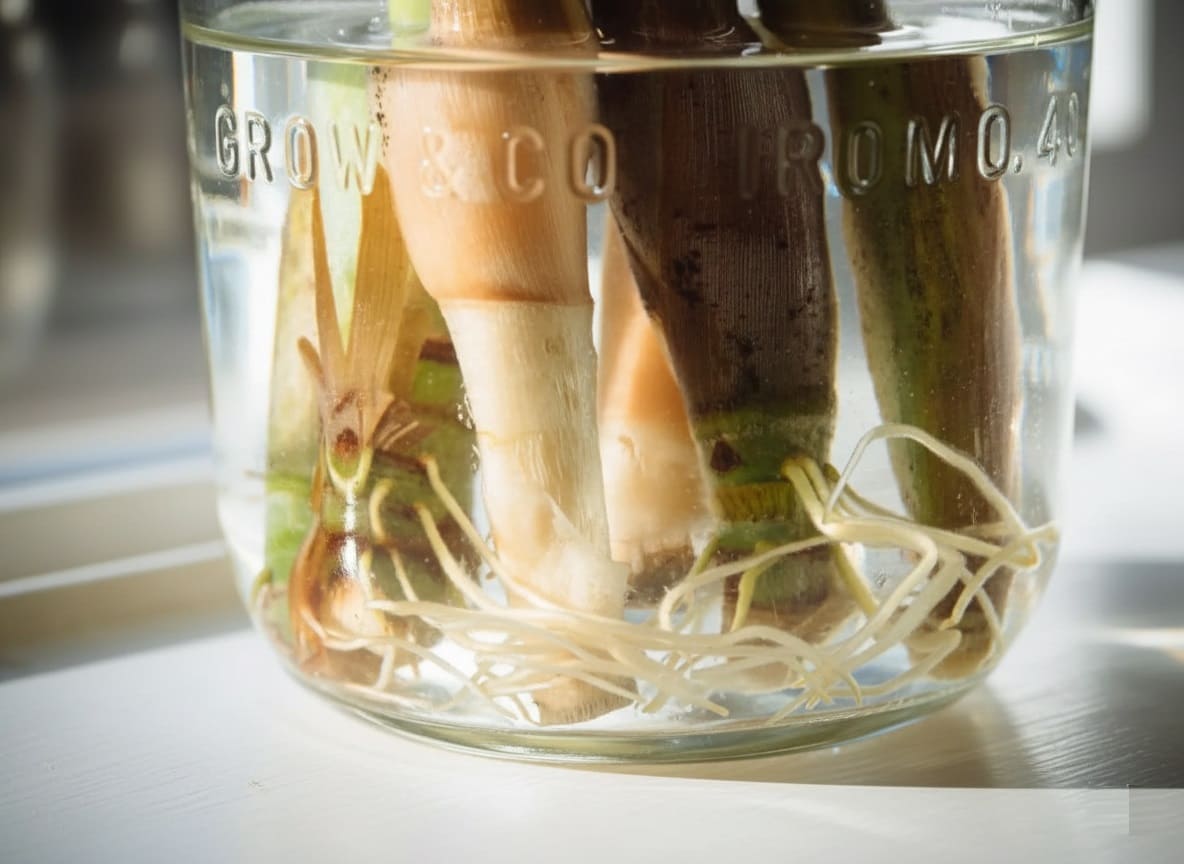
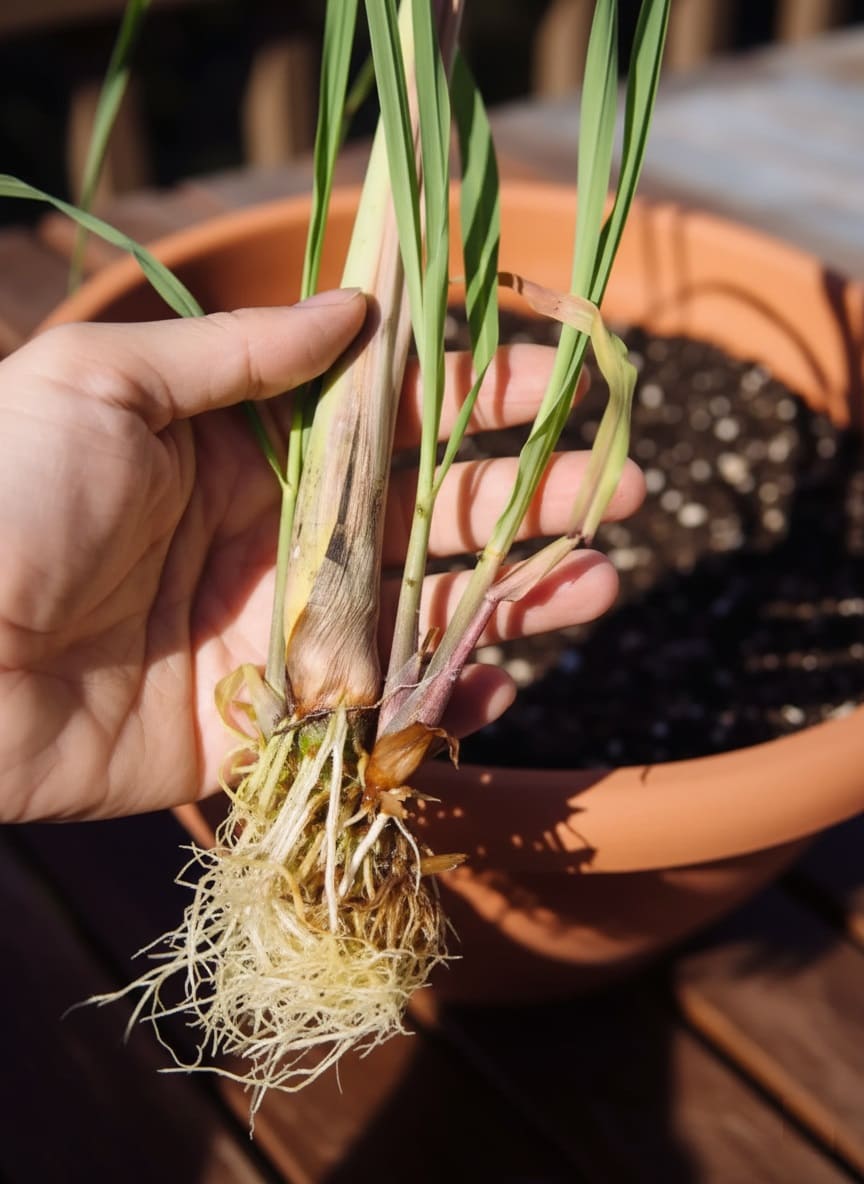
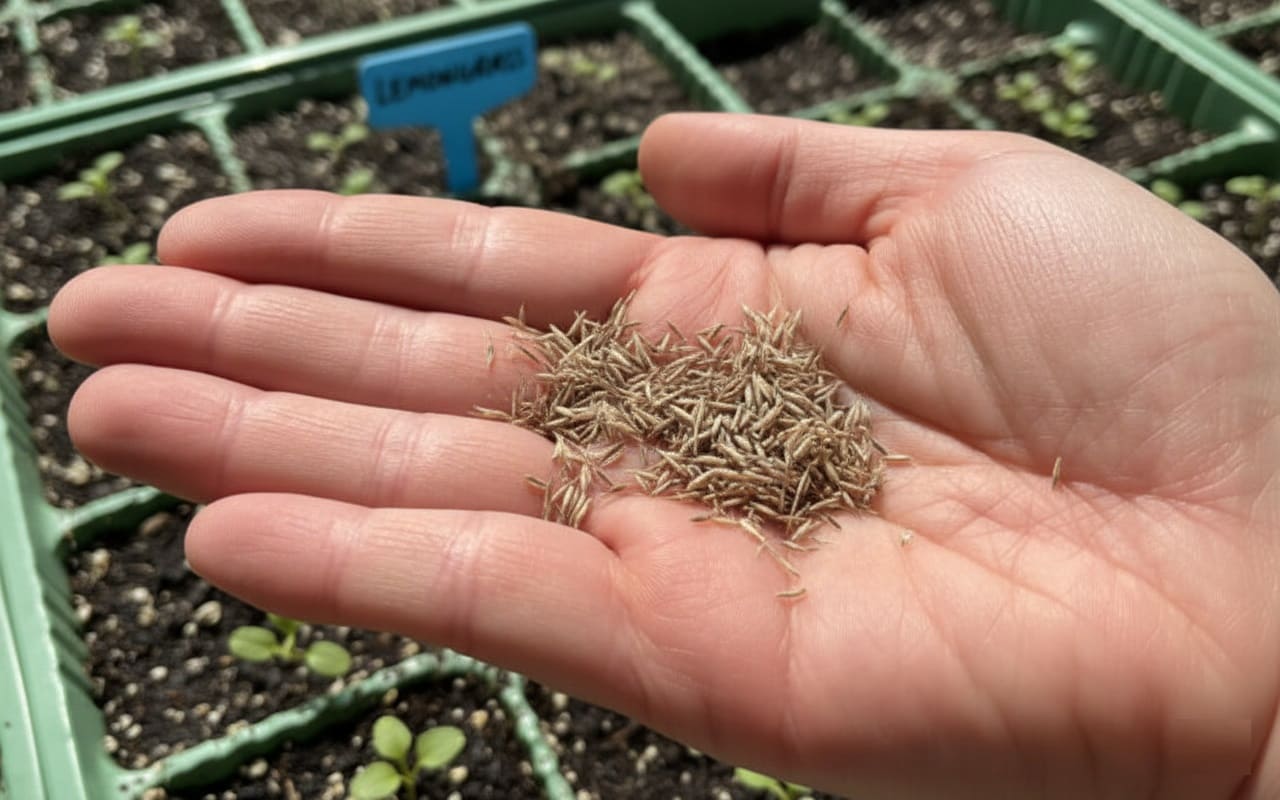
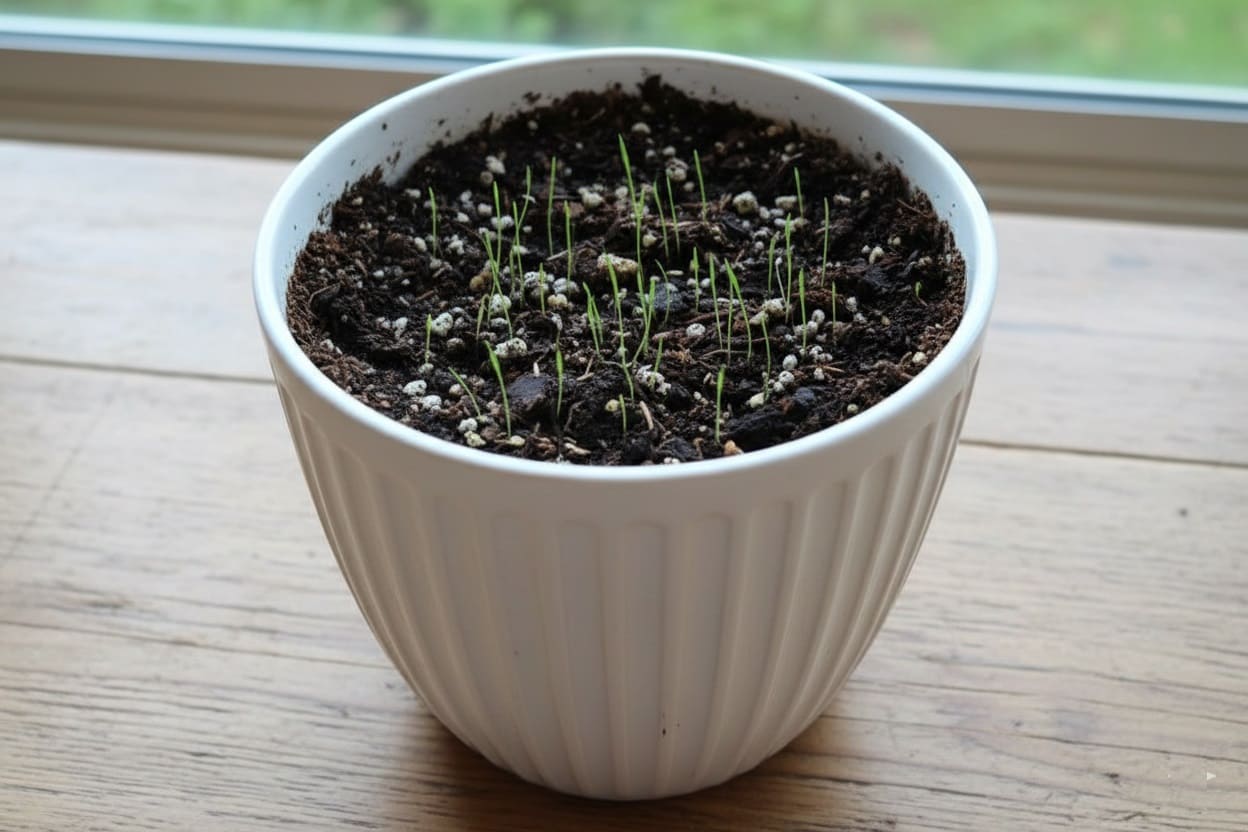
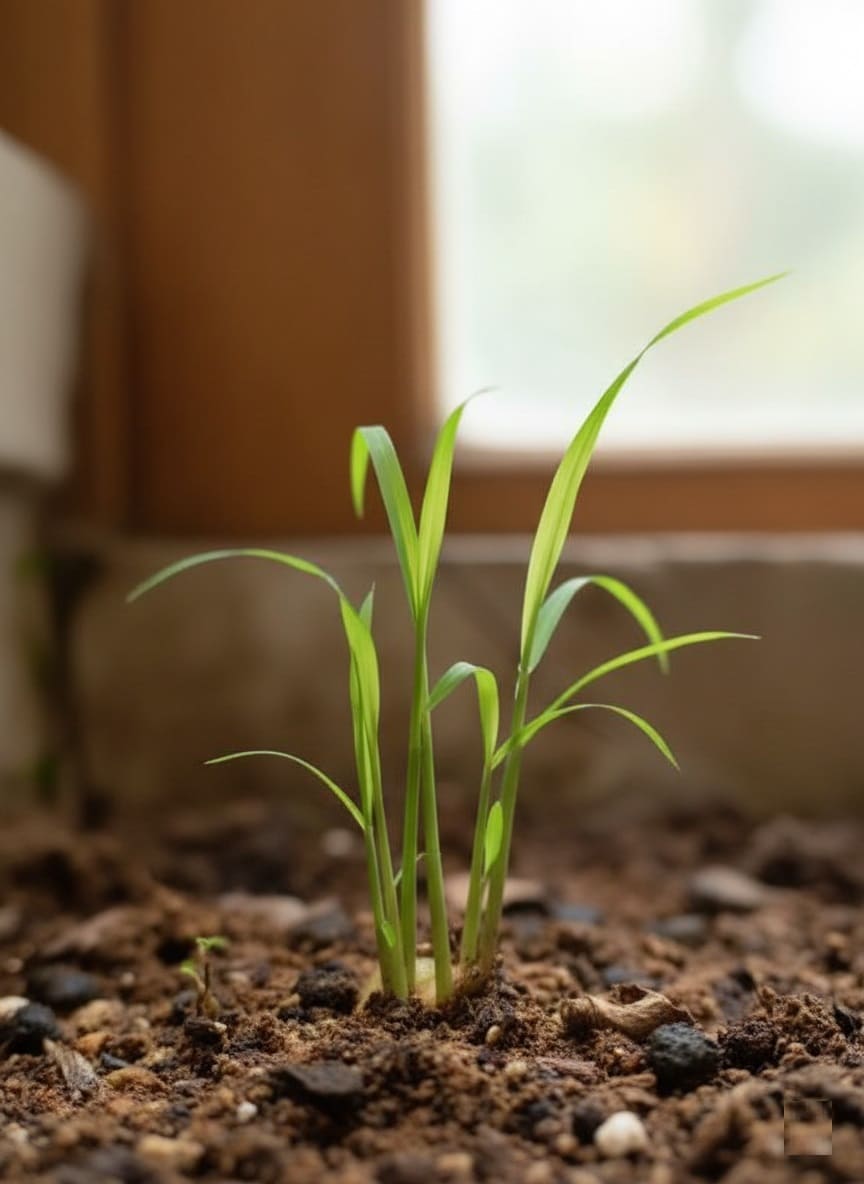
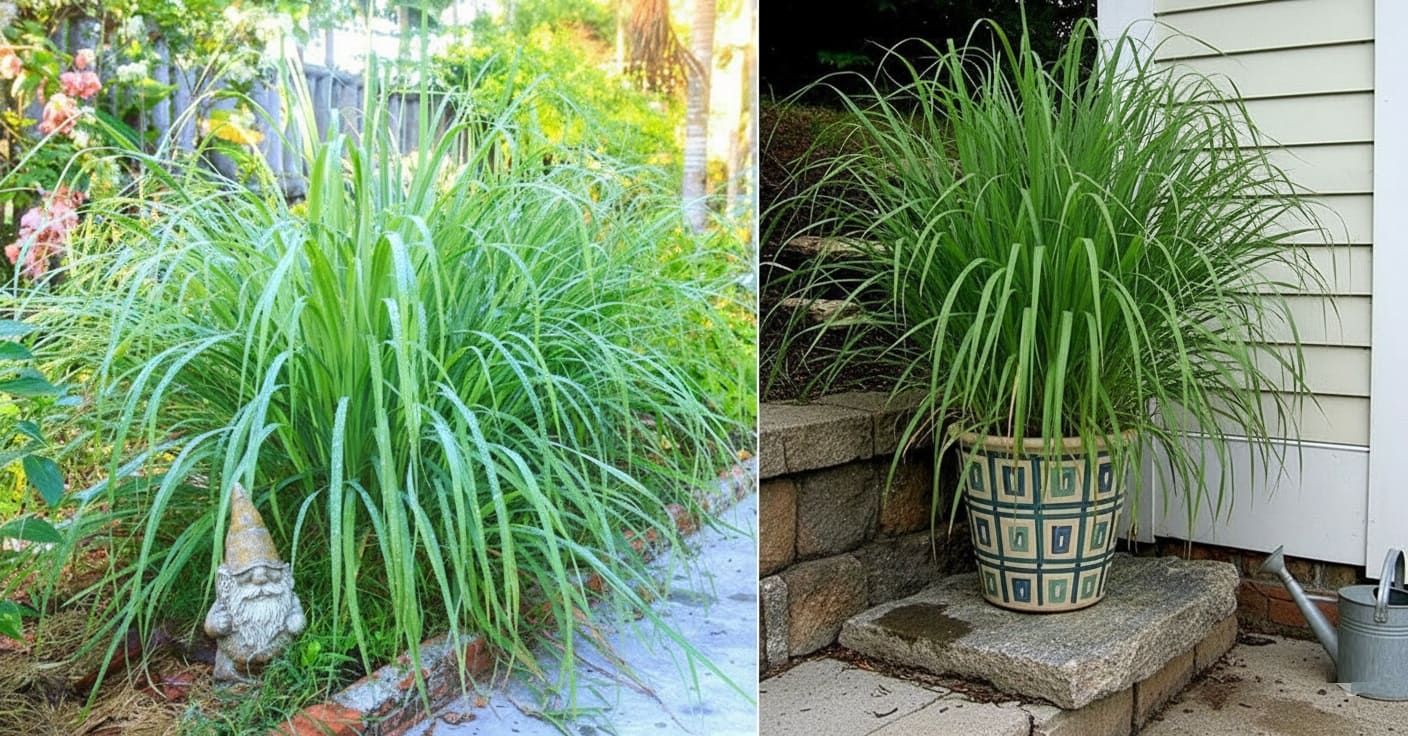

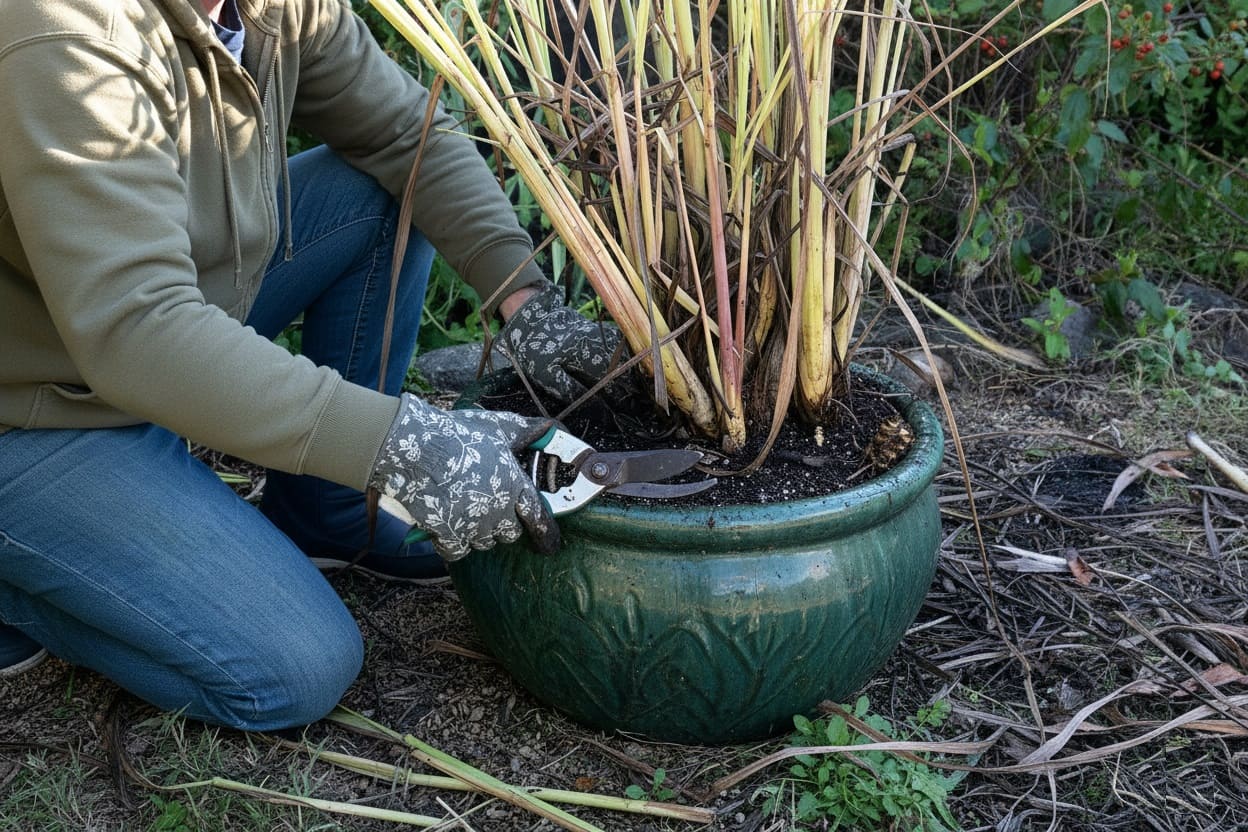
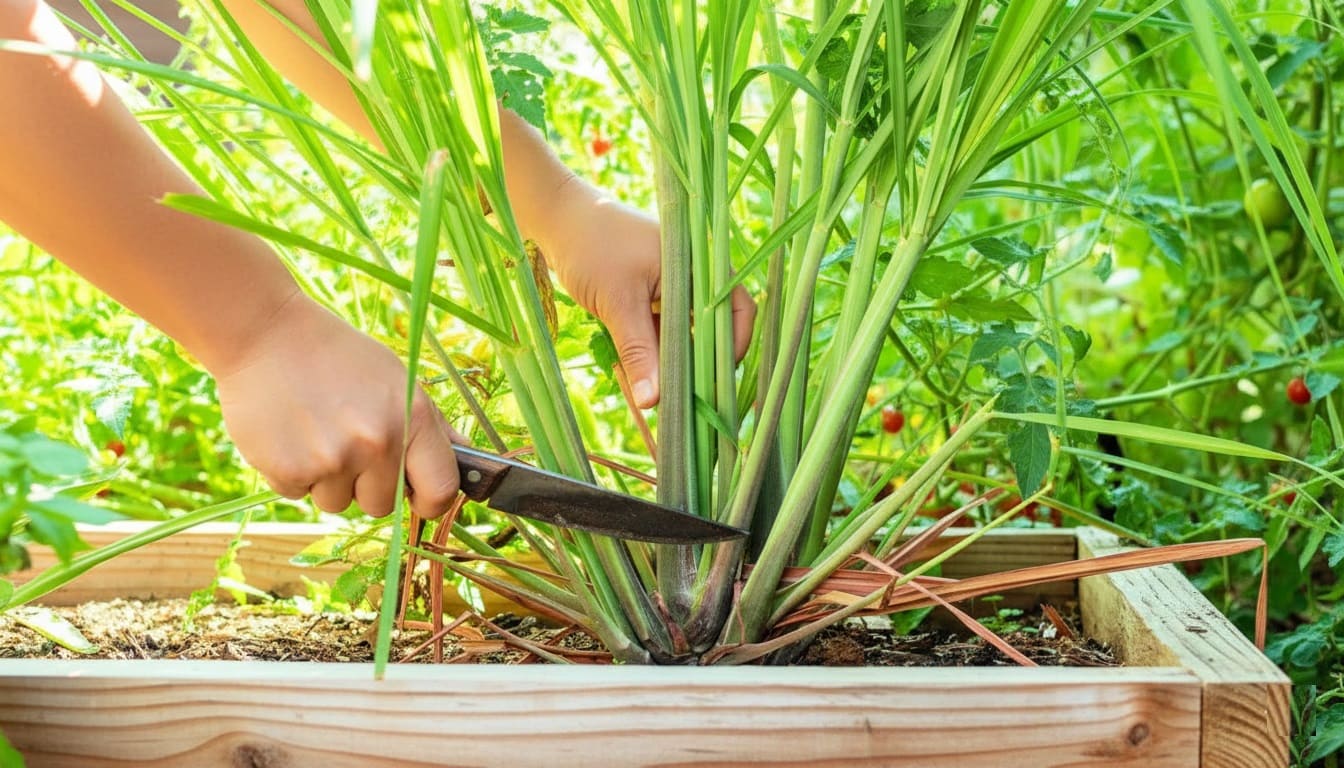
No comments:
Post a Comment